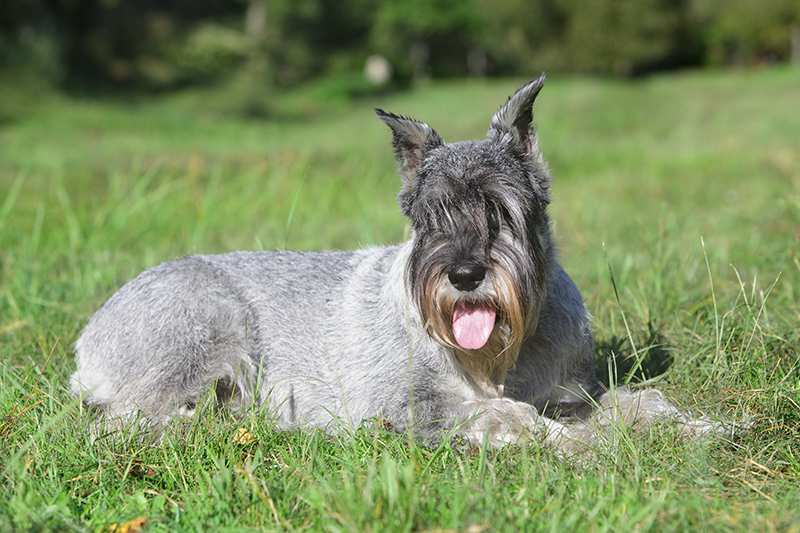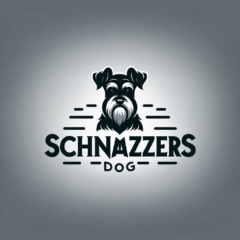schnauzer Comedo Syndrome (SCS), also known as follicular dysplasia, is a skin condition that primarily affects Miniature Schnauzers but can also be seen in Giant Schnauzers and Standard Schnauzers. This syndrome is characterized by the excessive formation of comedones (blackheads) in the hair follicles, leading to a variety of skin issues that can be both cosmetically unappealing and medically concerning for affected dogs.
While SCS is often associated with the Schnauzer breed, it’s essential to understand that it is not a breed-specific condition and can affect other dog breeds as well. SCS is a complex and frustrating condition for both dogs and their owners, and it can be challenging to manage without proper knowledge and guidance. In this article, we’ll delve into the latest research and expert insights to provide a comprehensive guide to understanding, managing, and living with Schnauzer Comedo Syndrome.
Understanding the Causes and Symptoms of Schnauzer Comedo Syndrome

The exact cause of Schnauzer Comedo Syndrome remains a subject of ongoing research. However, several factors are believed to contribute to its development, including:
Genetic Predisposition
Studies have strongly suggested that SCS has a genetic component, making Miniature Schnauzers particularly susceptible. According to a study published in the Journal of Veterinary Internal Medicine, there appears to be an autosomal dominant genetic mutation in Schnauzers, which increases their risk of developing SCS. Other possible genetic factors that may contribute to this condition include hormonal imbalances and immune system abnormalities.
Environment and Diet
Environmental and dietary factors may also play a role in the development of Schnauzer Comedo Syndrome. Some experts believe that exposure to certain allergens or toxins in the environment may trigger the condition in genetically predisposed dogs. Additionally, nutritional deficiencies or imbalances in a dog’s diet may contribute to the formation of comedones.
Skin Microbiome
The skin microbiome, which consists of a diverse community of microorganisms living on the skin’s surface, has been linked to the development of various skin conditions in dogs. A study published in the journal BMC Veterinary Research found that dogs with Schnauzer Comedo Syndrome had significantly lower levels of beneficial bacteria on their skin compared to healthy dogs. This suggests that alterations in the skin microbiome may play a role in the pathogenesis of SCS.
Symptoms of Schnauzer Comedo Syndrome
The most notable symptom of Schnauzer Comedo Syndrome is the excessive formation of comedones (blackheads) in the hair follicles. These comedones can appear on any part of the body but are most commonly seen on the back, chest, and inner thighs. Other symptoms may include:
- Crusty or scaly skin
- Hair loss or thinning
- Redness and inflammation
- Itching and scratching
- Skin infections
If left untreated, these symptoms can progress, leading to more severe skin issues such as pyoderma (bacterial skin infection) and seborrheic dermatitis (excessive oil production on the skin).
Diagnosis and Treatment Options for Schnauzer Comedo Syndrome
Diagnosing Schnauzer Comedo Syndrome can be challenging, as its symptoms are similar to other skin conditions, like allergies and hormone imbalances. A thorough physical examination and history of symptoms are essential for an accurate diagnosis. Your veterinarian may also perform skin scrapings and biopsies to rule out other underlying causes.
There is no one-size-fits-all treatment for Schnauzer Comedo Syndrome. The approach will vary depending on the severity of the condition and individual factors, such as age and overall health status. Some possible treatment options include:
Antibiotics
If your dog is experiencing a secondary skin infection due to scratching and irritation caused by comedones, your veterinarian may prescribe antibiotics to treat the underlying infection. This can help alleviate symptoms and prevent further complications.
Topical Treatments
Topical treatments such as medicated shampoos, ointments, and sprays can be beneficial in treating Schnauzer Comedo Syndrome. These products often contain ingredients like benzoyl peroxide, salicylic acid, and sulfur that help unclog and soothe the skin’s pores. It’s essential to follow your veterinarian’s instructions carefully when using topical treatments, as overuse or misuse can lead to skin irritation.
Diet Changes
As mentioned earlier, diet may play a role in the development of SCS. Therefore, making dietary changes can benefit dogs with Schnauzer Comedo Syndrome. Your veterinarian may recommend a hypoallergenic or limited ingredient diet to rule out any food allergies that may be contributing to the condition. Additionally, adding omega-3 fatty acids to your dog’s diet can help improve skin health and reduce inflammation.
Isotretinoin (Accutane)
In severe cases, your veterinarian may prescribe isotretinoin (commonly known as Accutane) as a last resort. This oral medication is used to treat severe acne in humans and has been found to be effective in some dogs with Schnauzer Comedo Syndrome. However, it comes with potential side effects, so it should only be used under close supervision by a veterinarian.
Managing Schnauzer Comedo Syndrome: Home Care and Preventative Measures

While there is no cure for Schnauzer Comedo Syndrome, diligent home care and preventative measures can help manage the condition and improve your dog’s quality of life. Here are some tips to keep in mind:
Regular Grooming
Regular grooming is crucial for managing Schnauzer Comedo Syndrome. Frequent brushing and grooming can help remove excess oil and debris from the skin, preventing the formation of comedones. Additionally, regular bathing with a medicated shampoo recommended by your veterinarian can help keep the skin clean and free from bacteria.
Protecting the Skin
Protecting the affected skin from further irritation is essential in managing Schnauzer Comedo Syndrome. This includes avoiding harsh chemicals or products that may irritate the skin, such as perfumes, detergents, and insecticides. If your dog enjoys spending time outdoors, consider using a dog-safe sunscreen to protect their skin from harmful UV rays.
Supplements
As mentioned earlier, adding omega-3 fatty acid supplements to your dog’s diet can help improve skin health and reduce inflammation. Consult with your veterinarian about the appropriate dosage for your dog and look for supplements specifically formulated for pets.
Living With Schnauzer Comedo Syndrome: Impact and Quality of Life

Schnauzer Comedo Syndrome can have a significant impact on a dog’s physical and emotional well-being. The constant itching and discomfort can take a toll on their quality of life and even lead to behavioral changes. It’s essential to provide your dog with proper care and attention to help them manage this condition. Some things to keep in mind include:
- Regular veterinary check-ups to monitor the condition and make any necessary adjustments to the treatment plan.
- A comfortable and clean living environment, free from potential allergens and irritants.
- Mental stimulation and enrichment activities to prevent boredom and anxiety caused by itching and discomfort.
- Plenty of love, patience, and understanding.
Research and Future Perspectives on Schnauzer Comedo Syndrome

Research on Schnauzer Comedo Syndrome is ongoing, and new information is constantly emerging. While there is still much to learn about this condition, we do know that early detection and proper management play a crucial role in improving a dog’s prognosis. As the understanding of SCS continues to evolve, we can expect more advanced treatment options and preventative measures to be developed in the future.
Conclusion
Schnauzer Comedo Syndrome is a complex and perplexing condition that requires careful management and attention. Understanding its causes, symptoms, diagnosis, and treatment options can help you provide your dog with the best possible care and improve their quality of life. If you suspect your dog may be suffering from Schnauzer Comedo Syndrome, consult with a veterinarian for proper diagnosis and treatment. With proper care and support, dogs with SCS can still lead happy and healthy lives.
